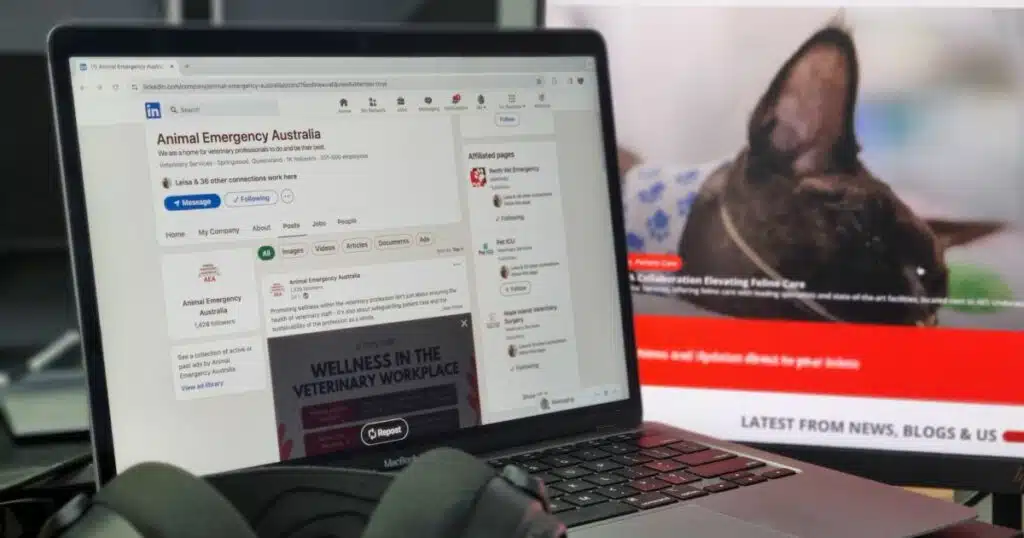In the veterinary profession, we’ve all had to deal with difficult clients at some point. As much as we love working with animals, it’s a job that relies heavily on people as well. Here are some tips on how to communicate effectively with clients, and hopefully turn a difficult client into a satisfied one so they’ll continue a positive relationship with you throughout their pet’s life.
Starting client communications off on the right foot
The first key to being able to communicate effectively with clients is to be clear and concise. When dealing with a difficult customer, they may be more inclined to try and trip you up by asking questions or making comments. This can be frustrating, but it’s important to stay calm, confident in your position, and professional. Be very clear in your answers, use language they understand, and make sure you’re not giving them any room to misinterpret what you’re saying. Always try to remain friendly and personable, even if the client themselves is not. Remember, they are the ones paying you for your services, so you want to make sure they feel valued.
Building rapport with your clients
If you can build a rapport with them, it will go a long way in diffusing any difficult situations that may arise. If you’re in a position to be able to use face-to-face communication with your clients, in-person meetings are the best way to build rapport.
Here are a few tips for building rapport in order to communicate effectively with clients:
- Use open body language, such as maintaining eye contact, uncrossing your arms, and leaning in slightly when talking. This shows that you’re interested in what they’re saying.
- Take an interest in them as a person, not just as a client. Ask about their day-to-day lives, their families, pets, etc.
- If you have anything in common with them, be sure to mention it! This can help create a connection between the two of you.
- Try to remember small details about them from previous conversations. This will make them feel like you’re really listening to them and care about what they have to say.
What to do when a client is unhappy with your services
If a client is unhappy with your services, the first thing you should do is try and understand why. For example, it can be a challenge to communicate effectively with clients about long waiting times. Sometimes there may be a misunderstanding that can be easily cleared up. Other times, they may have legitimate concerns that need to be addressed.
Listen to what they have to say without interrupting, and try to see things from their perspective. Would you be upset in their position? If you can resolve the issue to their satisfaction, great! If not, see if there’s anything you can do to compromise. Put yourself in your client’s shoes and think about what you would like to resolve the issue. It may not always be a refund, so think outside the box: can you offer the client discounted services next time, a priority appointment, a gift pack or voucher for their pet?
It’s also important to apologize, even if you don’t think you did anything wrong. This shows them that you’re willing to take responsibility for the situation and want to make things right. However, it must be a genuine apology, so if you’re not feeling it you need to get yourself into a better headspace. An easy way to do this is to excuse yourself to the bathroom, and move your body – jump around, look in the mirror and make silly faces, touch your toes – whatever it takes to put you into a different mindset so that when you return, you can say sorry and mean it.
The five golden rules of client communication
At Animal Emergency Australia we value the five golden rules of communication which help to alleviate issues before they become massive problems. These are:
- Try to see things from the client’s perspective
- Don’t take things personally
- Use ‘I’ statements
- Listen more than you speak
- Keep your cool
Let’s explore each of these in further detail:
1. Try to see things from the client’s perspective
Your client may be unhappy for a reason, and it’s important to find out what that is. If possible, speak to them directly and get their side of the story. Don’t wait too long to reach out if they have already left your business, as this could be the difference between the time it takes to leave a negative Google review.
2. Don’t take things personally
This is easier said than done, but it’s important to remember that client communication is not personal – even if you own the business. If a client is angry or upset, it’s more likely due to a situation or experience they had, rather than anything you did. It may even be that they made decisions in an emotional state – for example; if they had to choose a treatment option for their sick pet, or under straining circumstances such as financial constraints.
If you can keep this in mind, it will be easier to stay calm and diffuse the situation.
3. Use “I” statements
When communicating with clients, avoid using phrases such as “you should” or “you need to”. This can come across as confrontational and is likely to make the client defensive. Instead, try using “I” statements such as “I recommend” or “In my opinion”. This will make it seem like you’re on the same side as the client, and that you’re trying to help guide them rather than tell them what to do.
4. Listen more than you speak
This is a good rule of thumb for any kind of communication, but it’s especially important when dealing with difficult clients. They may just need someone to listen to them and their concerns, rather than trying to offer solutions straight away. If you’re a solutions-focused person you’ll find this incredibly hard to do, as you’ll just want to jump in and try and fix things.
Always remember that the person you’re talking to wants to feel heard and listened to. So if you jump in with a solution straight away, you’re doing neither of those things. The best thing to do in this situation is to be aware of your own nature and swap it out with a different habit. Instead of asking clarifying questions and jumping in to try and solve things remember this: empathy first. Empathy first is where you listen to the person’s concerns, and when they pause, offer an empathy statement. These are sentences like “That sounds really tough”, “I can see how that would be confusing” or “It makes total sense you feel that way”. This simple act of listening and validating their feelings will go a long way in building trust, rapport, and respect.
5. Keep your cool
It can be difficult to keep your cool when dealing with a difficult client, but it’s important to remember that losing your temper will only make the situation worse. Not only will it reflect poorly on you and your business, but it will also make the client even more upset. If you feel like you’re about to lose your temper, take a step back. It could be that there’s been a misunderstanding, or that they’re not happy with the service they’ve received so far. Either way, it’s important to try and see things from their perspective.
Summarise what you’ve discussed
Once you’ve had a chance to talk things through with the client, it’s important to summarise what you’ve discussed. This will help to ensure that both parties are on the same page and that there is a clear plan of action going forward. It’s also a good opportunity to check in with the client and see if they’re happy with how the conversation has gone. If not, you can address any concerns they may have before ending the call or meeting.
Conclusion
Always remember that your job is to make sure that you provide your clients with the best possible service and communication possible. If you keep these things in mind, then you should have no problem maintaining a successful and prosperous relationship by being able to communicate effectively with clients.






